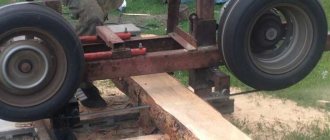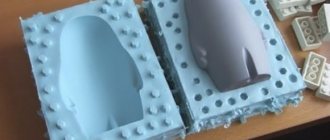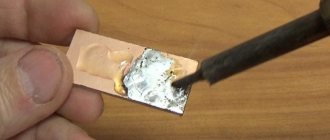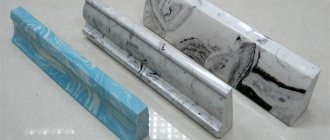Level, level, plane builder - with the advent of the “laser” prefix, these useful devices for precise orientation in space acquire a modern sound and at the same time a significant cost. Despite the fact that any of the devices can significantly make the life of a builder, repairman, or simply a thrifty and homely owner, many are in no hurry to purchase “professional” models, mainly because of the high price. However, expensive equipment for one-time use (for example, leveling walls) can be completely replaced with a homemade device. To do this, you must first understand the structure of the level or plane builder.
Principle of operation
The basic element of any device whose name includes the word “laser” is an emitter of highly targeted monochromatic (one-color) radiation. The phenomenon is based on forced radiation, which, depending on the power, is perceived differently. Low-power laser emitters based on red, red-orange, yellow-orange and green diodes make it possible to produce a point or beam of light. At a high level of pumped energy, a laser beam can turn into a weapon - it can set fire to materials that absorb radiation well.
Devices used in everyday life and construction and repair work operate on laser diodes of the red, yellow-orange and green spectrum; blue and violet ones are much less common (such models are much more expensive). To concentrate light radiation, biconvex lenses are used, as well as other optical devices that allow the beam to be converted into a plane.
Household appliances have a standard circuit shown in the illustration. Design variations are related to the power of the emitter and additional accessories.
Laser-based level and level design
Laser levels and levels use the principle of directly indicating a target - a point or line on a surface. They can be tracked directly (in relatively low light) or through the eyepiece of the device.
In addition to a point or line (the trace of the intersection of a light plane with a solid opaque surface), levels and levels allow you to obtain a cross-shaped pointer, as well as simultaneously use two or more emitters.
Due to the scattering of the laser beam into a plane, such devices are often called “laser plane builders”. In general, the set of functions of the device depends on the number of emitters and optical devices for concentrating or scattering the beam.
Substitutes for professional equipment
In homemade devices, a special laser emitter is replaced with a conventional laser pointer. With sufficient power and quality, as well as the presence of two or more attachments that allow you to transform the laser beam, such a pointer is quite suitable for making a laser level with your own hands. You just need to take care of sufficiently strong and convenient fastening and installation of the pointer in a strictly defined position with the possibility of displacement.
As can be seen in the illustration, a telescopic tripod with a convenient mount that allows the holder to be rotated is used to mount the professional device. Since such tripods are often found in the households of amateur photographers, they can be easily adapted to make a tripod for a laser level with your own hands. If you don’t have a tripod, you can make a simple stand based on a stick or timber with a support at the bottom, use a container of water or a hanging mechanism. These options will be discussed in detail below.
How to make a laser level on a tripod
If you have a tripod and a construction bubble (“spirit level”) level, creating a device comes down to installing a tripod and attaching a level to it with a laser pointer fixed on it. The illustration shows a level with an existing groove for the pointer, but in fact the fastening is simply done using clamps, wire or even tape.
The most difficult part is the correct orientation of the laser beam. To do this, it is advisable to insert a piece of hard rubber or foam between the pointer and the surface of the level, securing it with clamps or elastic bands, as shown in the diagram.
Here 1 is a pointer, 2 is a piece of dense and moderately elastic material, 3 is clamps or elastic bands. After setting the bubble level strictly horizontally (this can be done on any flat surface), the laser pointer turns on. By cutting the insert and tightening the clamps tighter or looser, we carry out a kind of adjustment of the level (of the future). Once parallelism between the horizontal plane and the laser beam has been achieved, you can mount the resulting device on a tripod in any convenient way.
Support in the form of a rod, float device or suspension
As already mentioned, in the absence of a tripod, we use improvised means - a barbell made from a broom handle, a shovel or just a piece of timber, or a container of water.
The structure of the rod is very simple: a beam or stick is attached to a piece of board or OSB board (plywood) strictly vertically and so that the structure is stable. You can check the angle between the support and the rod with a building square, but it is better to use a regular building level. Spacers can be used as support, as shown in the diagram below. A block the size of a bubble level with an attached pointer is mounted to the top of the rod - and the device is ready.
If you place a large container on the floor, filled almost to the brim with water, and place a level with a laser pointer on a flat piece of foam, you will also get a quite suitable support for a homemade level. In addition, in a container with water, the device can rotate freely, “drawing” a plane along all the walls of the room. Interestingly, for such a “float” level you don’t even need a bubble level. With an even piece of foam plastic on which the pointer is rigidly and strictly horizontally fixed, the laser beam will move only horizontally - due to the impeccable evenness and horizontality of the water surface. Simple steps for making such a laser level with your own hands and its operation are shown in the video.
The suspension is even easier to install. A beam is attached to a chandelier hook or other similar mount on the ceiling of the room using a rope or thin wire. A laser pointer is fixed on the beam so that the light beam is directed to the floor (if floor marking is needed) or to the walls. Next, by rotating the resulting level from the pointer, we obtain a light point or line on the desired surface. In the illustration, a tripod is used as a mount for the hanging level, and the pointer itself is fixed in a hole drilled in a beam.
Main types of defects
It is possible to repair a laser level in some cases, but first you should make sure that the warranty period for the device has expired. Warranty cases include:
- If, during the operation of the tool, irregularities appear on the laser line when projecting horizontal marks.
- In case of violations in the suspension system of prisms, which leads to the disappearance of sections of light lines.
- When violations of vertical rays occur, which leads to a difference between the level readings and the true readings.
- If during operation any element of the control board fails. Violation of any element of the board will certainly lead to a malfunction of the entire device.
- If a phenomenon such as sticking of buttons and switches occurs. This makes it impossible to turn the device on or off, or to switch between different functions.
- If a luminous beam does not appear when the level is turned on.
While the tool is new, it is handled with care, but over time, during active use, the device may fall or various types of aggressive substances may come into contact with it.
How to check a laser level yourself?
Checking a laser level may be necessary when doubts arise about its correct readings. To check the device, you need to place it in any corner of any room. Using a marker, you should put mark No. 1 in the corner with the device, then you need to direct a horizontal beam to the opposite wall diagonally from the device, and put mark No. 2 there. As soon as this procedure is completed, the device must be moved to the opposite corner and installed there.
Now you need to combine the beam with the nearest mark No. 2, and direct it to mark No. 1. If the beam coincides with it, then the device can be considered serviceable, but if not, then it will need to be repaired or adjusted.
Is it possible to fix it?
It is almost impossible to repair laser levels yourself. The device is a complex mechanism consisting of not only mechanical but also electronic elements. To repair the laser level, it is recommended to contact specialized workshops.
Numerous experience of level owners shows that only such a unit as the sight can be repaired. In this case, you will need to disassemble the tool body. Inside, there is a tendril on the movable element, which should be moved into a special hole on a metal base. In other cases, it is recommended to entrust laser level repairs exclusively to specialists. After all, the device is a fairly expensive device, which is very easy to damage if you try to carry out repairs yourself.
It is impossible to avoid breakdowns of the level, like any other instrument, but you can extend its service life by careful handling and proper care of it. Features of instrument care are described in the instructions that come with each product.
Additions to the homemade laser level device
Additional details and the use of not one, but two or more laser pointers will help increase the accuracy of the device. One of the simplest improvements is the use of a bubble level with two pointers, mounted on a rotating flange with markings, which will help you rotate the device to an arbitrary angle. In order for the system to work properly, it is important to accurately align the axes of the laser beams and secure the flange strictly horizontally. The convenience of the system is that it can be mounted on a tripod or rod.
By changing the position of the levels and the number of pointers, you can get a laser marker that provides a light cross.
If your household already has an optical level, you can use it as a stand to add a laser pointer. An example of such a design is shown in the photo.
The scheme is extremely simple: a bar with a “bundle” of a construction bubble level and a laser pointer attached to it, rigidly mounted on the level’s stand.
For those who have a tripod for a camera or video camera at their disposal, we offer a diagram of a do-it-yourself level made from a tripod with adjustable legs, brackets and the same “bundle” of level + pointer.
Material for making a water level with your own hands
- Transparent hose with an internal diameter of approximately 7 mm. Such hoses can be purchased at a hardware store, are sometimes used in aquarium hobby and can therefore be purchased at a pet store. The average length of the hose is 10 meters;
- Disposable syringe 20 ml with a wide cannula;
- Sealant in the form of plasticine;
- Rubber or cork stoppers to fit the diameter of the syringe. Instead of plugs, you can use pistons from a syringe cut in half;
- Tap water or non-freezing liquid used for washing car windows in rainy weather;
- Buckets for water.
Useful tips for creating homemade levels using laser pointers
Despite the convenience, compactness and low price of self-made devices, they have two main disadvantages: relatively low accuracy and a short period of operation with constant use of laser emitters. The first issue is solved by setting up the device. To eliminate the second drawback, experts advise replacing the coin-cell batteries in laser pointers with an external power source. It is important to select a source with the required voltage. Typically it is 4.5 V, but may vary for different models.
When buying a laser pointer for a level device, you should carefully select its power and the color of the emitting diode. The best option is a green beam, it is less harmful to vision and is better visible even in relatively bright rooms.
By slightly increasing your budget, you can purchase a simple laser level with or without a tape measure. In this case, you can attach a ready-made device to any base, rather than a combination of a bubble level and a laser pointer.
Often these devices already have places for mounting on a tripod or tripod.
You can also use a laser tape measure as a source of laser radiation.
One more nuance: if a ready-made tripod (tripod) is used to install the laser, a useful addition to it will be a strip with markings or an ordinary metal (wooden, plastic) ruler. This will allow you to raise or lower your homemade level to a certain height without additional measurements. By the way, it is convenient to make the tripod itself from PVC pipes.
What do we do?
As for work on the ground, the choice of leveling method is clear - by eye, see below. But it is better to make a construction and repair level using a laser: its advantage, such as a manifold reduction in the labor intensity of marking work, cannot be missed.
3D laser level and laser level
There are generally 2 types of laser levels on sale: 3-coordinate (3D, pos. A in the figure) and laser levels, pos. B. A 3D level that draws lines, corners, crosses and even, under the control of an external computer, the contours of openings or finishing panels - a complex optical-mechanical design that is unlikely to be repeated by hand. But the main thing is that such devices are very flimsy. Not only an accidental shovel of earth or a dropped tool, but also ordinary construction dust in the room can permanently damage a 3D level. Therefore, devices of this class find rather limited use, and we will take up a laser level - it, homemade, can be fit into the given conditions in all respects.
What we have?
Making a laser level seems to be as easy as shelling pears: attach a laser pointer to a regular bubble level and you’re done. Place everything together on a flat stand, spin it and mark it on the wall. The production of such a “mini-level” usually takes no more than 10 minutes, see for example. video:
Video: homemade mini laser level
The laser level device is shown on the left in Fig. There its main Achilles heel is visible - the initial installation on a tubular bubble level. For accurate initial installation, the beam of the device must be aligned to the horizon along 2 mutually perpendicular planes. But on site, when placing the level on a random support (on the right in the figure), both adjustments turn out to be interdependent! I twisted the tripod leg horizontally in one direction - the beam “went” up or down along the perpendicular. As a result, it can be easier to mark the markings with your hands than to struggle with setting up the laser.
The laser level device and how to use it
Based on this, we will introduce 2 modifications to the design at once: installation of a leveling block on a 2-coordinate level (see below), and a lightweight portable support, independently adjustable to the vertical. On an exactly vertical support, and if you can immediately see where and how much the leveling unit has tilted, it can be quickly and simply set up in one step for the entire marking cycle at a given site.
Although the device of a homemade laser level with a laser pointer instead of a special head is simpler, the procedure for setting it up (see next figure) is no less labor-intensive, and the accuracy and stability are much worse than with manual marking. In this case, 2 more weak points are added to the design: the pointer head and the rotation unit. Where is the guarantee that the pointer beam “hits” exactly along its optical axis? In order to simply move the beam back and forth, their axiality (coaxiality) is not required, which is why laser pointers are cheap. And if the beam is beveled, then when marking by points, instead of straight horizontal lines and plumb lines, you will get tangentoid segments. Their deflection may not be noticeable by eye, but the marking error will exceed the permissible limits.
Device and methods for adjusting a homemade laser level
As for the rotation unit, custom-made parts for it will hardly cost less than the cost of a ready-made laser level. Amateurs with a rotation unit are as clever as they can be. It’s good if there are suitable ready-made parts for it in the storerooms (simply in the trash), as, for example, in the plot:
Video: rechargeable level from a laser module
But this is a single unique product. If there are no suitable components in the stash, craftsmen manage to make laser levels even from... sewer pipes, see video:
Device setup
To set up a homemade laser level, you can use different methods, but one of the simplest is to use a mirror. The diagram below shows how this technique is used.
After the initial installation of the device, the laser is turned on and at the point where it falls on the wall (any other suitable plane), a small mirror is attached using a piece of plasticine. Using a level, achieve a strictly vertical (perpendicular to the planned position of the beam) position of the mirror plane. After this, the laser is turned on again. If the incident (emanating from the device) and reflected beam coincide, the adjustment is considered to be of high quality. If a match does not occur, change the position of the laser emitter until the desired result is achieved.
To set up a laser device that has a line rather than a point as a target designator, a target-rail is used (it is convenient to use a metal profile for drywall). In the place where the light line is reflected on the vertical surface, press the target (rail) and use a level to check its horizontalness (or verticality, depending on the position of the laser).
There is a quicker way to check if the settings are correct. The diagram shows how, using a bubble level and a stretched cord, the horizontality of the lines connecting the laser emitter and the screws on the wall at the point of impact of the beam is checked.
What can tripods and rods be made from?
There are several options for making the tool: from a telescopic, polypropylene, aluminum tube, or from a metal profile.
Available materials are used as a basis; some parts (for example, the head) can be purchased separately. In any case, making the design yourself will be cheaper than buying it in a store.
What tools and materials will be needed
To manufacture the device you will need the following tools and materials:
- pipe with the following parameters: cross-sectional diameter 27 mm, wall thickness 1 mm;
- handle for telescopic roller;
- glue “Moment” (you can also use a glue gun);
- part of the rug;
- Screwdriver Set;
- self-tapping screws;
- stationery knife;
- head from an inexpensive tripod;
- metal corner 40*100 mm;
- plastic clips for Ø 25 and 20 mm – 2 pieces each;
- drill;
- sealant gun (can be old);
- coupling (needed for support from below);
- polypropylene tee (32 mm);
- screw 4-6 mm, wing;
- plastic screws (5/8 thread).











